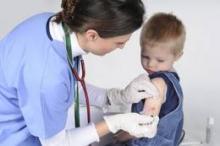Health care providers should take advantage of opportunities at all visits to give the supplemental dose of the new 13-valent pneumococcal conjugate vaccine to all eligible children aged 14-59 months because of the potential for missed doses.
Younger children should receive the full PCV13 primary series because recent data have shown that children who were vaccinated with the 7-valent vaccine (PCV7) are susceptible to serotypes that can cause invasive pneumococcal disease (IPD) and even death.
The Advisory Committee on Immunization Practices (ACIP) published recommendations in 2010 for PCV13 to replace PCV7 for all children at ages 2, 4, and 6 months and for a supplemental dose for those aged 14-59 months.
According to Immunization Information Systems (IIS) sentinel site data from March 2010 to June 2011, only 37% of children who had received PCV7 received the supplemental PCV13 dose, and only 46% of children aged 59 months and younger who required additional primary series doses received the required PCV13 (MMWR 2011;60:1477-81).
A 2-year-old girl in California died from IPD caused by serotype 19A, which is covered by PCV13 but not by PCV7. The girl had received three doses of PCV7 but had not been vaccinated with PCV13. The California Department of Public Health found 30 children who had developed IPD caused by serotypes that were not covered by the PCV7.
Between May 1, 2010, and April 30, 2011, the Centers for Disease Control and Prevention (CDC) studied children younger than 59 months in 12 geographical regions, and found that 63 vaccine-eligible children developed IPD because of a serotype that would have been prevented by PCV13.
The data came from eight IIS sentinel sites, 10 Active Bacterial Core surveillance sites (Connecticut, Minnesota, and New Mexico, and selected counties in California, Colorado, Georgia, Maryland, New York, Oregon, and Tennessee), and two Epidemiology and Laboratory Capacity for Infectious Diseases sites (Utah and Los Angeles County).
In all, 76% of those 63 children were hospitalized, but no deaths were reported. Some 62% had received four doses of PCV7 but did not receive the supplemental PCV13, whereas 18% had received three doses of PCV7 but no fourth dose, which should have been a PCV13 dose.
The data have three limitations: First, the data were collected from select regions and thus may not be representative for the whole country. Second, although the IIS sentinel site data are checked for accuracy, PCV13 doses could have been erroneously reported as PCV7 doses. Finally, although no problems were reported, providers may have experienced delays in receiving the new vaccines.


